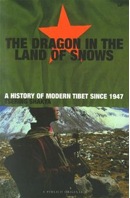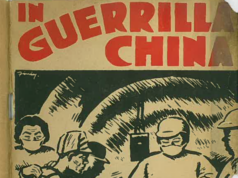 by Tsering Shakya, (Pimlico, 1999)
by Tsering Shakya, (Pimlico, 1999)
- ISBN-10: 0140196153
The situation in Tibet continues to boil with recent self immolations by monks and nuns bringing the spotlight again on the region. Using a variety of original sources, the author tells the story of Tibet in the modern era. Tsering Shakya was born in Lhasa and fled to India with his family. He later won a scholarship to study in Britain and is now a Professor in the Institute of Asian Research at the University of British Columbia in Vancouver, Canada.
The book’s hefty 450 pages follow the events from 1947 (when India became independent from Britain) in considerable detail, giving plenty of space to the actors and actions which helped to define the era in Tibet. The book spells out the complexity of events, the many different parties involved, and also the influence, albeit limited, of Britain, India, and the US.
The broad conclusion that rises from all the detail is that ultimately it is the story of a clash of two incompatible cultures and world views: Tibet’s traditional religious and social customs and the Chinese Communists’ two ideologies: nationalism and the unification of China; and communism, the progressive reform of a backward “feudal” society.
In 1950, the PLA entered Tibet and China insisted on incorporating Tibet into the “motherland”. China had overwhelming military power which it either used, or threatened to use, when necessary to achieve its aims. In contrast, while it desired to maintain its independence, Tibet’s government was weak, divided, isolated internationally, and its military was inadequate. Tibetans clearly did not regard themselves as part of China but, despite Chinese assurances, Tibetan autonomy was erased and their culture and religion were progressively devalued and controlled by the Chinese.
Some surprises emerge in the book. For instance, the 1959 Tibetan ‘revolt’ started as a misunderstanding between the Tibetans and the Chinese. The Dalai Lama tried to resolve it but such was the Tibetan people’s mistrust, misunderstanding and their fear and resentment at the Chinese, all exacerbated by the harsh treatment of resistance in eastern Tibet, that events got out of hand. The Chinese for their part suffered from a number of false assumptions and refused to accept the slightest challenge to their power.
At the present day, little has changed. Communism has been replaced by an equally fervent belief in economic development, for which Tibet’s natural resources are valuable, but the nationalism and conspicuous imposition of military power continue. Chinese migrants have benefited most from the economic developments while Tibetans suffer lower levels of education, employment and opportunity. However, China considers the issue to be primarily one of preserving the ‘motherland’, not addressing Tibetan concerns.
In a 2012 interview, the author notes that he doesn’t expect much change in China’s approach to Tibet despite a new leadership. The spate of self immolations, he suggests, result from the lack of proper channels in China for people to voice their grievances to the authorities without fearing for their safety. This book provides a thorough description of the five decades of Tibetan history in which its society and culture have experienced huge change.
The Dragon in the Land of Snows is available from Hastings Public Library and on Amazon.com
Matthew Griffiths, 2013
Matthew Griffiths is a long time member of the NZ China Friendship Society. He loves Chinese food, has visited China many times, and studied Mandarin. He and his Chinese-born wife Deborah have two bilingual children. They lived in China from 2008 to 2010. Matthew travelled to Tibet in 2010 and now he can’t stop reading books about it.
For a pdf of this book review click here.




